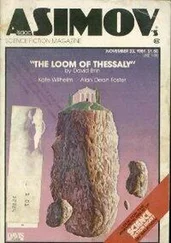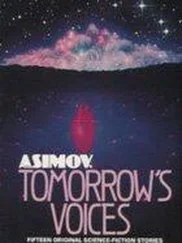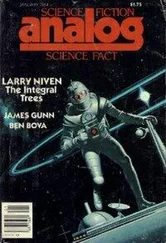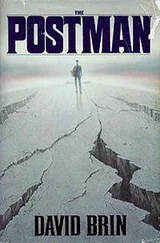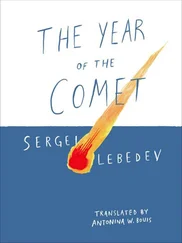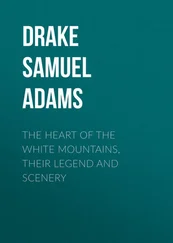He suppressed a guffaw. The crucial step, the insertion of the sleepslot modules into the head of the comet, didn’t seem at all like the climax of a dangerous, five-year voyage by sailship, a prodigious engineering feat, a modern marvel. Instead, it looked to him like the coupling of monstrous genitalia.
The slender slot tug Whipple glided forward, nose down. Stripped of its solar sails and antennae, it was the uniform ruddy color chosen to maximize its thermal balance during the years in flight from Earth orbit. The sleep-slot payload rode forward, its extra shielding against cosmic rays filling a bulging, rounded knob, slightly thicker than the main body.
Below, Shaft 4 gaped. The surrounding ice was freshly exposed from the scratchings and abrasions of mechs—creamy, virgin ice which had not seen the harsh glare of sunlight since the time the planets and comets first formed.
Carl started to chuckle and coughed to cover it. Over the hiss of suitcomm nobody could tell the difference, probably. He blinked, but the pornographic illusion would not go away. I must be a lot more tired out than I thought.
—Needs a li’l of three-degree realign at sixty azimuth,— Jeffers sent.
“Right. Got it,” Carl replied. Jeffers’s data was integrated as he spoke, and then Carl’s helmet screen leaped into activity. A graphics view turned, green lines against black ground, showing how the Whipple looked along all three axes. Then the desired view came, an overlay in orange cocked at an angle along two axes. Carl punched in corrections.
A cluster of higher-ups were watching by TV, he knew, and Ould-Harrad stood on the surface below, cold-eyed and critical. They would certainly send back an edited version in the squirt to Earthside. Plenty of eyes to catch a mistake. Watch Carl Osborn snag ninety-odd souls halfway in, maybe.
Carl shook his head. To hell with that. Just watch the vectors, do the job. Can’t let nerves scramble your synapses, as Virginia would say.
He fired four jets just behind the Whipple’s central engine housing. The pulsed ruby-red against the black. Each cut off in sequence as the orange image on his faceplate merged with the green.
—Cleared.—
—Here goes,— Andy Carroll sent. Andy sat forward in the small bubble cabin of the ship, and had nominal control. Jets flared a pale blue along the aft beams.
The Whipple glided smoothly in, clearing the yellow protective liners with ease.
—On the money!— Andy yelled. —Picking up the guide.—
The sleep-slot knob drove cleanly in, catching in the railings that would keep it from going astray once inside. Over suitcomm Carl heard shouts of celebration and even some handclapping leaking through from an open channel back in the Edmund’s lounge.
The sleep-slot module separated, descended. The sail tugs were as slim and weight-wise as classic nineteenth-century windjammers. Their slender, silvery frames carried sleep slots, supplies, and a robot crew—all in cylindrical modules fitted snugly along a tubular frame, the spine for the great spread wings that cupped the solar wind. Those gossamer sheets were now furled, awaiting humdrum service as mirrors for the surface greenhouses. That left the naked frame, a great beast now stripped by reductionist logic to a skimpy skeleton.
And somewhere out there the Newburn sails on, Carl thought about the missing fourth tug. Lost, a victim of the cold percentages.
—Reversin’ her!— Andy backed his ship out carefully. It would slip down a different path, into its own chamber. Jeffers now commanded the mechs inside to draw the sleep-slot module downward through nearly a kilometer of shaft, into the vault that had been prepared for it.
Carl turned up his bonephone: Beethoven’s Fifth Violin Sonata, the last movement a liquid rush of piano notes. A reward. Lugging big masses around was standard stuff, but it felt different when there were ninety lives at stake. He needed to ease off, relax. The main show was over, but he still had hours of work to go.
The graceful, fluid sway of chamber music seemed to Carl natural for working in zero G. He could never understand Jeffers or Sergeov, who listened to that raucous, heavy-handed Clash Ceramic stuff while they worked. He vectored down beckoning to the distant dot that was Colonel Ould-Harrad.
Carl slowed above Shaft 6 to accompany the African officer, who was space-able but less used to making speed through tunnels. A mistake could cram you into the wall with bone-splintering impact. It took years for Earthsiders’ bodies to really believe that lack of weight didn’t mean absence of inertia.
They shot downward. Fiberthread walls rushed past, illuminated by regular yellow daubs of electrified phosphor paint. Carl watched Ould-Harrad’s swarthy face for signs of some reaction, but the man kept his eyes intently ahead and said nothing. Carl felt a twinge of disappointment. He had lined this shaft himself, without mechs, putting in fourteen-hour days to meet the deadline. And a pretty job, it was. Damn-all if anybody’d say word one about it, though.
Of course, Ould-Harrad was an Ortho, and pretty hard-line about it, according to scuttlebutt. All during the voyage out the man had been distant, formal, his poker face giving away nothing. He clearly expected that young upstarts would remember their place. Not likely he’d be glad handing a menial Percell.
Carl shrugged and turned up the Fifth Sonata. Only after some time did it occur to him that they were, after all, failing face down in a shaft that dwindled away into the distance, the phosphors converging dots… Even in a micro-G, Ould-Harrad’s mental alarm bells were probably ringing.
“Hit the brakes, the vault’s only a few hundred meters ahead,” Carl sent.
—I see. Good-.- was the only reply.
They slowed as the tunnel flared into a roomy chamber, already partly lined with brilliant lime-green insulation. The sleepslot module was already descending from the intersecting Shaft 4, a stubby intrusion. It nearly filled the uninsulated half of the vault. Everywhere the primitive ice gave back glinting reflections of the sweeping lamps of men and mechs. Carl had helped hack out the rough-cut walls, using big industrial lasers. Seams of carbonaceous dirt and rusty conglomerates made curly, mysterious patterns on the broad stretches of black ice, like writing by some unseen biblical hand.
—Ahhh,— escaped from Ould-Harrad as he braked to a stop. Carl noticed that the man looked relieved. Maybe they should have gone slower.
—C’mon,— Jeffers called on open channel. —Got to get these coffins buried.—
Ould-Harrad’s clipped, authoritative voice was unmistakable. —I would appreciate you men not referring to the slots that way.—
—Yessir,—Jeffers said curtly.—You bet.—
Carl sent, “I’ll take the blue-coded mechs,” and locked his board on a dozen flitting forms. The slot-sleep equipment was nearly obscured by robotoids swarming around it, an army of gnats splitting off sections.
Sleepers would be stored in three widely separated vaults, to minimize chances that a single accident might cripple the mission. Technical teams—Computers, Life Sciences, Mechanical Operations—were evenly spread. The boxy slots were laid outward like the arms of a starfish from the central utilities spine. The lifesupport gear was a knobby backpack on each coffin—Carl couldn’t help but think of them that way, both from appearance and because the sleepers were as near to dead as you could get and still come back.
Each slot had to be fitted into hardplast nooks that protected them and yet allowed the interior to exchange heat with the nearby ice. The original idea had been to let the ice cool the sleepers directly, but Carl had seen the results of that at Encke. There was a lot of carbon dioxide or amorphous snow which could vaporize explosively, blowing valves and seals on the coffins. It wasn’t a snap to use volatiles in high vacuum. So the engineers had to rig buffers to save the sleepers from shudders and bumps and sudden, freezing death.
Читать дальше




